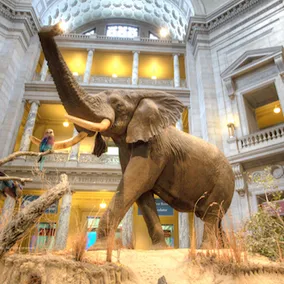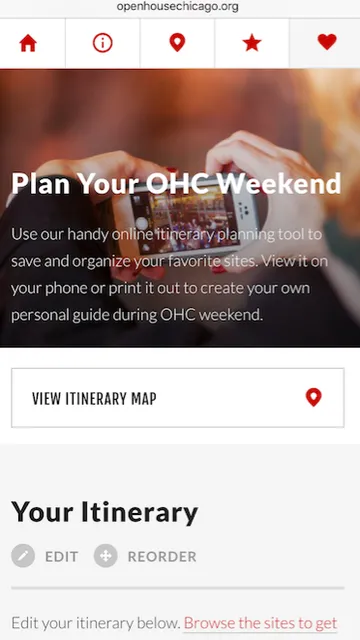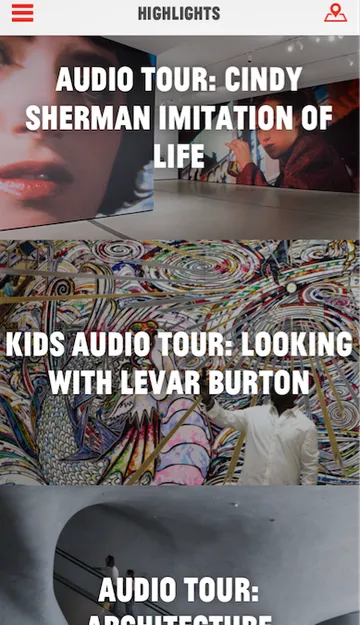Bringing Digital to the Museum

Samara Strauss, Former User Experience Designer
Article Category:
Posted on
Many museums are moving into the digital age by incorporating mobile experiences, interactive tables, and more.
Picture a museum. Images of quiet corridors, tiny wall labels, and “please don’t touch” signs probably come to mind. You might think of a place that is traditional, academic, and certainly analog.
To be clear, there’s nothing wrong with things that are traditional, academic, or analog; but, in the age of digital, technology is almost expected to be part of every experience. We see digital in stores, transit systems, and theme parks. Even as we speak, we’re working with the Wildlife Conservation Society to pilot a new mobile experience in their parks. For museums, however, the transition seems to present a bigger challenge since one of their main roles is to serve as guardians of history.
It comes with its challenges, but many museums are bringing themselves into the digital age. This shift begins with research and manifests through mobile, movies, interactive tables, and more. Here’s a closer look at how some museums are doing it.
Grounding Progress in Research
Moving meaningfully into the digital age isn’t simply about creating a nice website that showcases a museum’s collection. For exhibitions to successfully incorporate technology, patrons’ goals, needs, motivations, and behaviors need to be considered in the equation.
To get a better idea of how museums approach understanding their audiences, we talked to a number of digital teams. “When you’ve been in museums for so long, it’s really easy to forget how to speak the language of the audience,” said Donny Lowe, Director of Digital Strategy at the National Baseball Hall of Fame. To make sure they’re not out of touch, Lowe says that they use surveys and user testing to gauge patrons’ interests and the success of new digital products, and that he hopes to incorporate an even greater feedback loop between visitors and the museum. “The goal is to have a 360 degree view of the visitor.”
Additionally, the team over at the Chicago Architecture Foundation seeks out visitors’ feedback in order to make sure they incorporate digital in meaningful ways. Patrick Miner and Marilyn Jackson, both members of the marketing team at Chicago Architecture Foundation, outlined their methods, which include surveys, leveraging social media reviews and comments, and consulting data and analytics. Among other things, these insights have informed the design of Open House Chicago. Knowing the site was primarily accessed via mobile devices, the team optimized the experience with geolocation and other mobile-friendly features.

Embracing Mobile
With research in mind, there can be many ways to incorporate technology. Leveraging mobile is an obvious route, one that might make sense for museums who want an investment in technology to have the broadest potential reach.
For example, The Broad in LA has self-guided tours and artist narrations that people can access via their phones.

The Brooklyn Museum created ASK, which allows patrons to text with museum staff about any painting or piece that might catch their eye as they walk through exhibits. Other museums are looking towards the future, imagining a world in which you could hold your phone in front of a painting, sculpture, or artifact and augmented reality would overlay information.
Museums are also taking into consideration how to power these kinds of interactions. Bluetooth technology aims to bring wifi to the masses, so people don’t have to rely on their data plans or worry about poor signals.
Movies, Interactive Walls, and Beyond
Beyond mobile, museums are experimenting with technology in ways that don’t require patrons to bring anything with them to the museum.
Film is one medium that museums are using to bridge the analog-digital gap. The American Revolution Museum in Yorktown is working on 4D movies that immerse the viewer through moving seats and subtle aromas, like gunpowder. The Illinois Holocaust Museum filmed over 20 hours of interviews with Holocaust survivors and used those recordings to create an experience that makes it feel as if museum-goers are able to “interview” the survivors.
Interactive walls and tables are another way museums are branching out. By tapping into people’s affinity for all-things touch (pun intended), museums are enhancing their exhibits through a familiar and friendly medium. Cooper Hewitt Museum in New York City is a good example of this. Patrons are given a digital pen which allows them to save pieces for later, write on interactive tables, and interact with the immersion room.
And, what would a conversation on digital be without the obligatory nod to wearables? San Francisco’s de Young museum experimented with guided tours through Google Glass. Despite anyone’s personal feelings on Google Glass, it’s unlikely that experimentation with wearables is going anywhere, and we may be seeing virtual reality in our museums someday.
---
Museums are not the analog institutions of yore. Digital experiences are being incorporated in creative ways that enhance instead of detract, often blurring the lines between education and entertainment. “Entertainment and having fun is the gateway to educating someone,” says Baseball Hall of Fame’s Donny Lowe. By incorporating digital mediums, museums are both facilitating education and bridging the gap between tradition and progress.
Looking to dive deeper? If you’re looking to learn more about what’s going on in the industry, I recommend starting with the following resources:
John Stack, Digital Director of the Science Museum Group
Sree Sreenivasan, Former Chief Digital Officer at the Met
Blogs
The Met’s Digital Underground blog